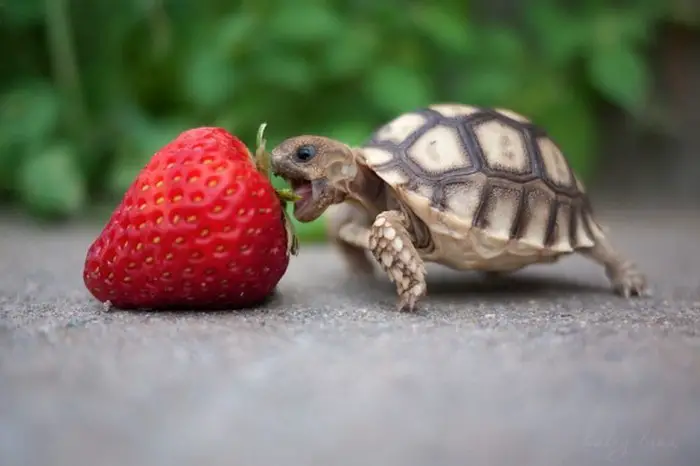Although many universities don’t allow large and furry pets like cats and dogs in the dorms, and roommates in shared living situations might have allergies or aversions to more common domestic pets, smaller, furless animals can provide many of the same health and happiness benefits as their big, furry counterparts.
Caring for any pet is an opportunity for college students to form new pet-owner relationships, develop a sense of personal responsibility by caring for another living creature, and, for some people, decrease the effects of loneliness, depression, and anxiety.
Because owning a pet during the college years can greatly improve the quality of life for many, it’s important for potential pet owners to weigh the alternatives to cats and dogs and figure out what kind of pet best fits their individual lifestyle and personality.
There’s no point in getting a pet if you don’t have the time and resources to properly care for it, so make sure you can be a responsible parent to your new pet before you go out and buy one. And make sure to check your college’s pet policy as well—although many colleges allow certain small animals (primarily fish), many more don’t allow any pets at all, regardless of size, cleanliness, and breed.
Today, we’ll go over the best pets for college students that are small in size and, for the most part, easy to keep in a dorm room.
1. Reptiles
Reptiles such as turtles, snakes, and lizards can make fantastic pets for the right people. Although they may not be as soft and cuddly as a cat or dog, shelled and scaly critters can add a healthy dose of companionship and entertainment to their owners’ lives.
Before getting a reptile, it’s important to know that caring for these cold-blooded creatures isn’t a task you should undertake lightly; you’ll need a thorough understanding of your new pet’s species, habitat, preferred environment, and ideal temperature before going out and buying a snake, turtle or lizard.
There are other drawbacks to keeping reptiles as pets that you should know about before deciding to buy one.
Snakes, especially large snakes, can be high-maintenance. Feeding a pet python means performing unappetizing and gruesome tasks, such as microwaving frozen rats for the snake’s dinner.
As for many turtles and tortoises, a very long life expectancy means a potentially life-long (and possibly longer) commitment for their human friends. In fact, there are plenty of instances of tortoises and turtles outliving their original owners by decades.
While lizards don’t live as long as turtles and don’t eat rats like snakes, they eat live insects, which can be a bit gross and tricky to manage. Flies, crickets, and cockroaches are their favorite.
If you’re willing to set aside the necessary time and effort it takes to properly care for a reptile, it can be a very rewarding experience. But if you don’t think you’re ready for the responsibility of caring for such strange and wonderful creatures, reptiles might not be the right option for you.
2. Fish
Apart from being the most widely-accepted pet for students living in college dorms and residences, certain species of fish are among the easiest animals to care for.
So-called “starter fish,” such as goldfish, require minimal maintenance and can live in small (but clean) containers. Some types of pet fish, such as White Cloud Mountain Minnows, only need to be fed every few days and actually do better with less frequent feedings.
Fish need little to no socialization with humans to stay healthy (although an aquatic friend or two would be much appreciated, especially in the case of schooling fish species) and don’t require you to set aside time to play with or exercise them. If you keep your fish’s tank clean, feed them regularly, and provide them with an interesting environment to swim around in, your fish should be fine.
There are plenty of other, less pleasant things to consider when deciding to buy a fish, however. For one, you can’t cuddle or handle a fish like you can most other pets on this list. For two, cleaning fish tanks can be hard work and, especially for big tanks, a large sink is required. On top of that, filters can be noisy (especially when the water level in a tank sinks due to evaporation) and you need to purify and dechlorinate tap water before it’s safe to add to a fish tank.
In the case of tropical and/or saltwater fish, you’ll also need a tank heater and/or a salt-sensitive device to keep track of water salinity if you want to keep your new finned friends happy and healthy.
However, despite these difficulties and responsibilities, fish—especially starter fish—remains one of the easiest, most low-maintenance types of animal to care for. Because of this, they’re a great option for college students with busy schedules and very little spare time.
Before deciding to become a fish pet owner, it is advised to learn how to choose the right fish for your fish tank.
3. Insects and arachnids
Like fish, there are many species of insects and arachnids that make great, easy-to-handle pets. Tarantulas, cockroaches, crickets, scorpions, and millipedes are all animals that most people would rather not have in their living space; however, for bug lovers, these tiny animals can make excellent pets.
Tarantulas and scorpions aren’t recommended for beginners due to their fragility and potential to sting and bite. If you get one of the more docile species of tarantula, you should (with some caution and prior knowledge of the breed) be able to occasionally handle your spider and prove that, despite their bad reputation, pet spiders aren’t necessarily dangerous.
If that sounds too uncomfortable or dangerous, cockroaches, crickets, and millipedes are perfect for anyone just starting their bug-owning days. Especially cockroaches—all they need to thrive is a terrarium or aquarium (not filled with water, of course) with plenty of shady places for them to crawl into, food, water, and a friend or two.
Another thing to note is that cockroaches are very social creatures, so it’s important not to strand one by itself. You wouldn’t want your little pet to get lonely!
As for millipedes, they’re known to secrete a potentially toxic irritant from their skin when scared, but if you wash your hands after handling your pet, you should be fine. If you’re concerned about how toxic your new pet might be, you should ask a millipede or insect expert, and try handling your millipede in a safe place to see how you react to the substance it secretes before taking it home.
While you might have a hard time convincing your university’s housing staff and/or roommates that having a tarantula or scorpion in your room is a good idea, crickets, millipedes and cockroaches are extremely low-maintenance and non-threatening animals to keep in your dorm.
Choose Your Small Pet Wisely
Choosing the best pet as a college student requires careful consideration.
Each pet comes with its own unique needs, personality, and level of care. By assessing your living situation, schedule, and preferences, you can make a wise decision that brings joy and companionship into your college life. Whether it’s a small turtle, a cricket, or a low-maintenance fish, your small pet can be a source of comfort and happiness throughout your college journey.
Remember to prioritize their well-being, provide a suitable habitat, and dedicate time to their care. Embrace the love and joy that a small pet can bring, and make your college experience even more fulfilling.

















